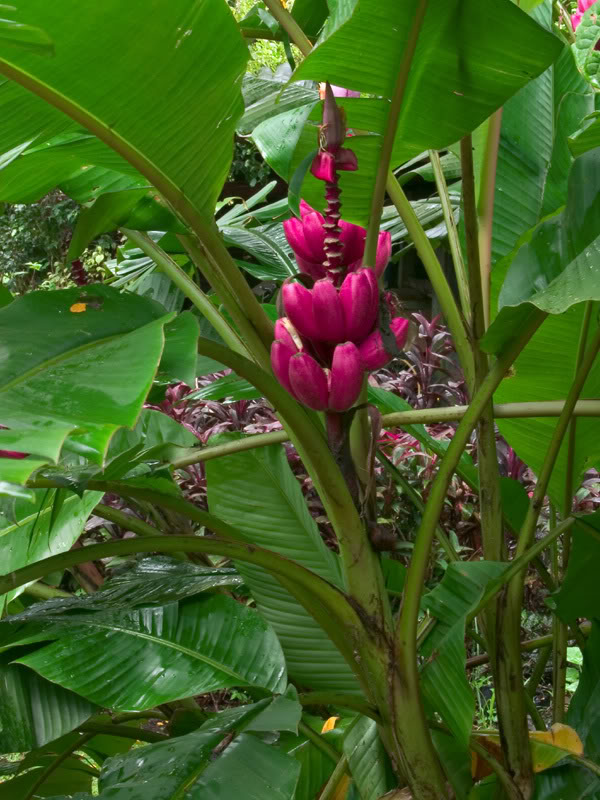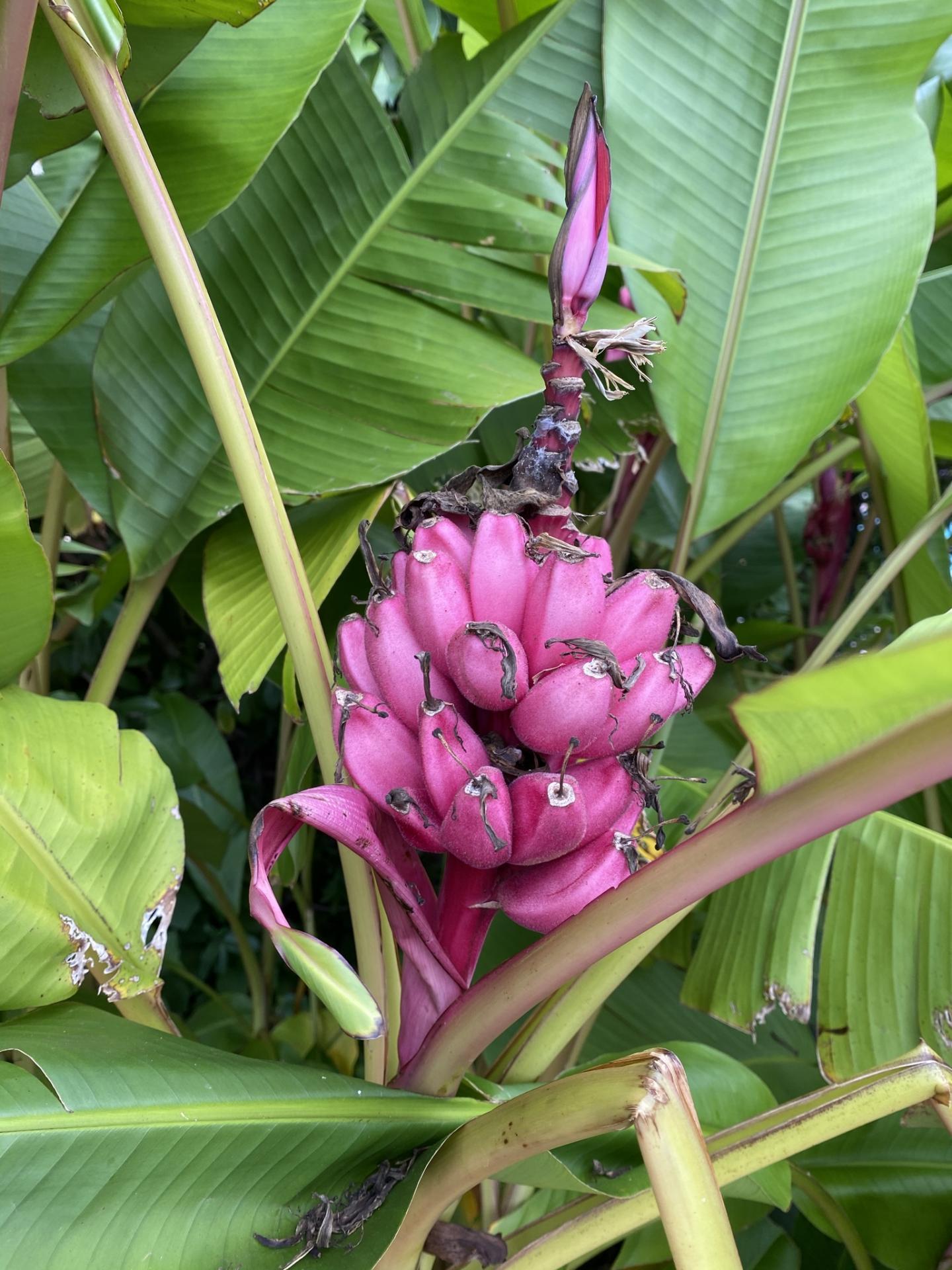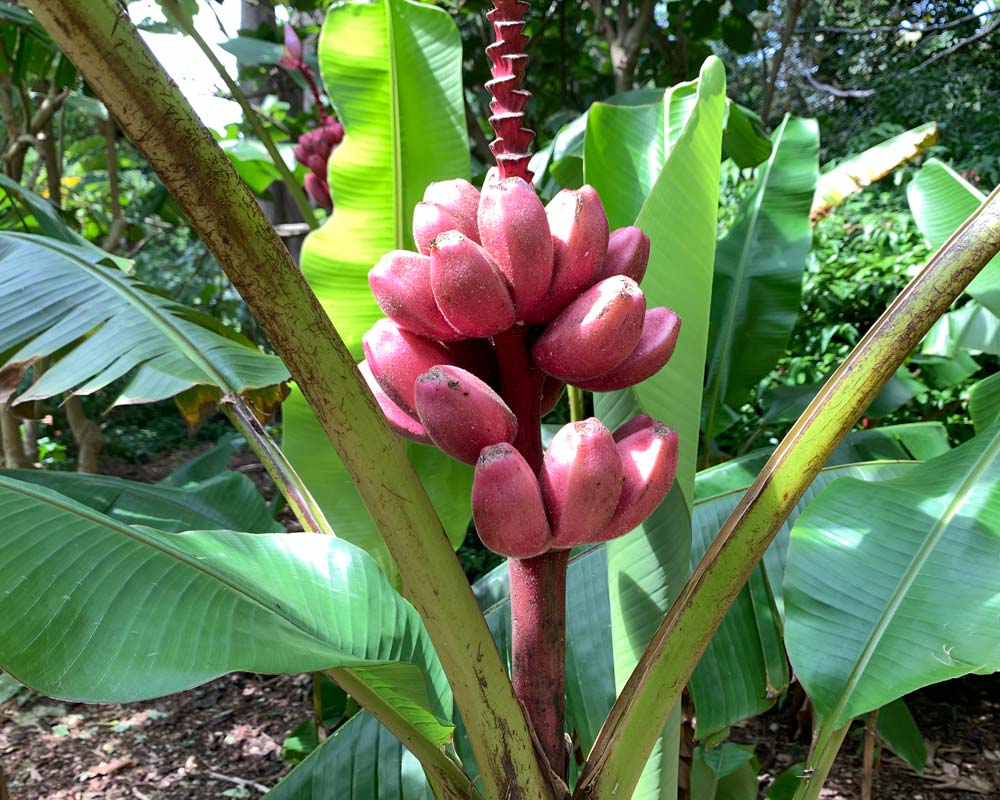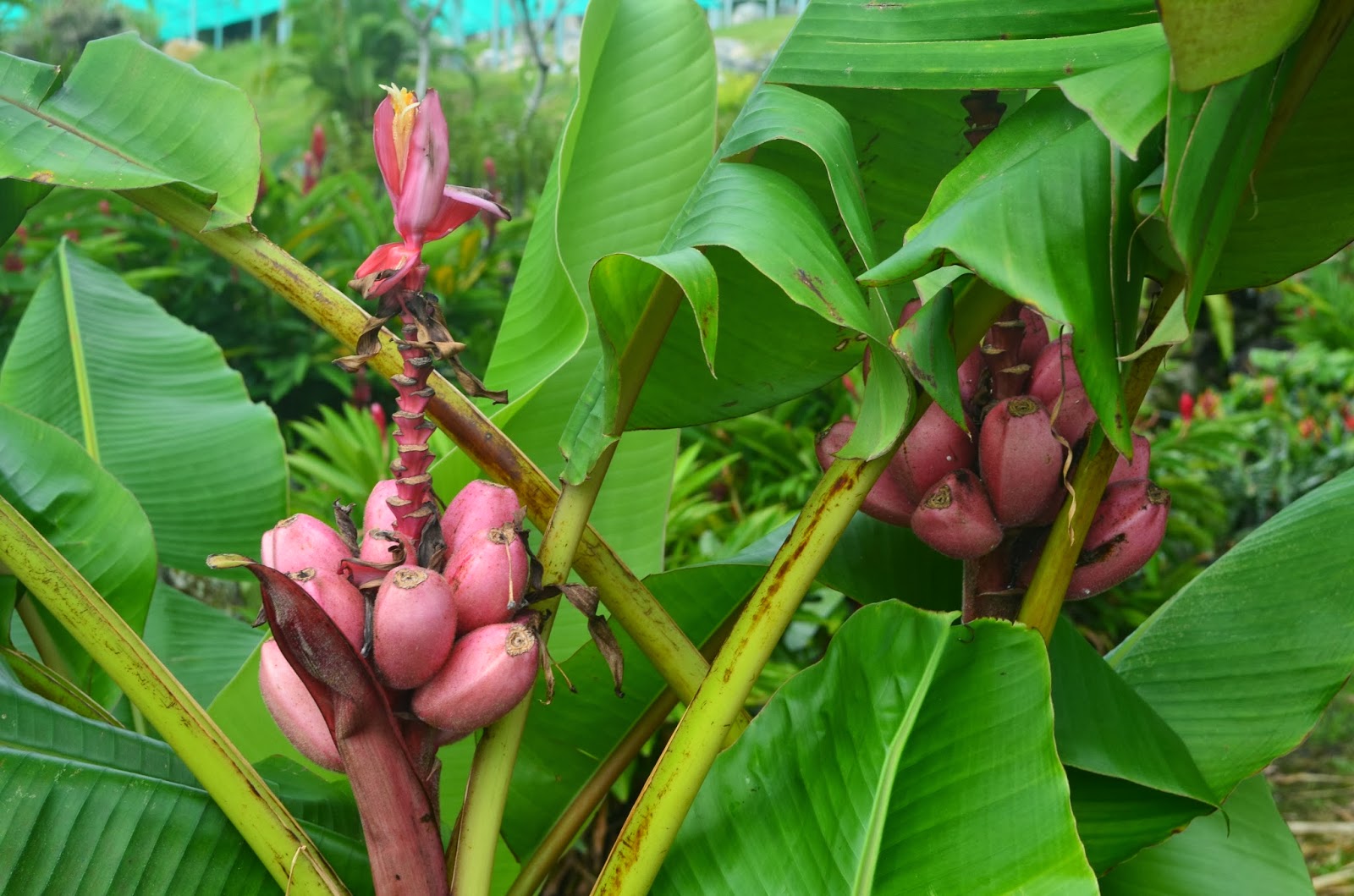
Polynesian Produce Stand Velvet Pink Banana 30 VIABLE SEEDS Musa velutina COLD HARDY
The specific epithet, velutina, is Latin and means "velvety" and most likely references the pink velvety fruit of the pink banana. This plant performs best in full sun and moist, well-drained, humus-rich soils. It does not tolerate drought and will need to be watered frequently. A sheltered location is preferred to prevent wind damage to the.

Seed Pack = = =Pink Velvet Banana 10 Seeds Nice Ornamental Tropical Musa velutina Good
Musa velutina is a dwarf perennial with typically large, veined, paddle-like leaves . It produces arching spikes of creamy yellow flowers in summer that are encased with pink bracts. Musa velutina can be grown as an ornamental plant though it does produce edible fruits that are soft and sweet, though the seeds are relatively tough and can be a dental danger.

Musa velutina Plant Delights Nursery at Juniper Level Botanic Garden Blog
Pot Size: 2 qt. (1.9 L) $32.00. Quantity. Buy Now. There's something mystical about a pink velvet banana that makes you want to start belting out Elvis tunes.hmmm. Musa velutina was our first introduction to hardy bananas and is still a favorite in our summer garden. Rarely exceeding 8' tall, Musa velutina produces copious flower stalks near.

Musa (Velutina) Aloha Tropicals
Musa velutina, the hairy banana [1] or pink banana, is a diploid species of wild banana. [2] These plants are originally from Assam and the eastern Himalayas. [3] The fruits are 3 in (8 cm) long, pink, and fuzzy. They are borne on erect flower stalks with a pink inflorescence. Musa velutina flowers at a young age, doing so within a year.

Musa velutina (Hairy Banana, Pink Banana, Pink Fruiting Banana, Pink Velvet Banana) North
How to Propagate Musa Velutina. Pink bananas may be propagated using their seeds or rhizomes. Here's how it may be propagated with its seeds: Remove the seed coat with a file or a small scalpel. Soak the seeds for 24 hours in slightly warm water. Plant it in a well-drained pot containing a mixture of moist soil and peat.

Musa velutina pink velvet banana
Musa sp. - cultivated bananas Morphology. The cultivated banana plant is a tall (2-9 m) perennial herb. The above 'trunk' is called a pseudostem and consists of concentric layers of leaf sheaths rolled into a cylinder 20-50 cm diameter.. Musa velutina - Hairy banana, Pink banana. The pink banana has a hairy, pink peel and are shorter.

Pink Velvet Banana musa Velutina Plant 10in to 2 Ft Etsy
It's important to soak the seeds for around 24 hours in warm water before they're sown. Be sure to select a well-draining medium and keep it moist throughout the germination period—which can be up to six months. The pink velvet banana tree (Musa velutina) is generally grown for its highly ornamental value rather than for the pink, hairy.

Musa velutina Botanic Garden Meise EN Plant sheet FR Fic… Flickr
Specializing in rare and unusual annual and perennial plants, including cottage garden heirlooms and hard to find California native wildflowers.. Musa velutina "Pink Velvet Banana" Photo by Nico Nelson. A super hardy, fast-growing banana tree that often flowers and fruits in its FIRST YEAR! Generally reaching a manageable 3-6' tall with a.

Musa velutina (Musaceae) image 6531 at
Musa acuminata (Banana) is a large, fast-growing, suckering evergreen perennial boasting huge, paddle-shaped leaves, up to 6-10 ft. long (180-300 cm). Erect spikes of cream to yellow flowers adorned with showy bracts appear seasonally on mature plants (2-3 years old). They are followed by edible yellow bananas. The leaf sheathes overlap to form a trunk-like pseudostem.

Musa velutina Big Plant Nursery
Musa velutina plants are heavy feeders and benefit from regular fertilization. Apply a balanced, slow-release fertilizer every two to three months during the growing season (spring through summer). Additionally, consider supplementing with a high-potassium fertilizer to promote flower and fruit production.

Musa velutina Pink Velvet Banana for sale 28.00 Plant Delights Nursery
Cultivation. Grow outdoors in a sheltered site in humus-rich soil in full sun or under glass in a loam-based potting compost (JI No 3) in full light with shade from hot sun. Water freely from spring to summer and apply a balanced liquid fertiliser monthly. Keep just moist in winter. Repot ornamental species annually or every other year, in spring.

Musa velutina
Musa velutina is a plant native to India. This large shrub will grow anywhere from five to ten feet tall and enjoys full sun or semi-shade with regular water. Additionally, it requires a temperature of at least 55 degrees Fahrenheit, meaning it is hardy in USDA Zones 8-11. Musa velutina is grown for both its beauty and its edible fruit. The.

Musa velutina "Pink Velvet Banana" Buy Online at Annie's Annuals
Cold-hardy, Musa velutina (Pink Banana) is a dwarf, suckering evergreen perennial boasting paddle-shaped, dark green leaves, 3 ft. long (90 cm). Arching spikes of cream to yellow flowers adorned with showy pink-red bracts appear in summer. They are followed by bright, velvety, pink bananas that contain numerous black seeds and creamy white flesh.

Musa velutina (Musaceae) image 49394 at
Photograph D In this Photo Musa basjoo is in the forefront. The Arundo donax 'Peppermint stick' with its variegated leaves contrast well with the tropical darker leaves of the Basjoo Banana. You will find Musa velutina, Clerodendrum trichotomum, Hedychium, and other tropical plants.

Laman Kambatik Plants list (4th ed.) Velvet pink banana (Musa velutina)
How to grow a pink banana tree. Pink banana trees are hardy plants that can withstand temperatures as low as 0C to -6C. At this point, the foliage will suffer, but it will eventually spring back with the arrival of the warmer season. As the m usa velutina is considered an exotic plant, you may have difficulty tracking down the seeds to begin with.

Musa Velutina Always Shipping Best Plant & Seed For You
Pink Banana (Musa velutina) This banana plant is evergreen in warm climates (above USDA hardiness zones 8) but it can also survive in cooler climates, where it will die back to the ground in winter, to re-emerge in spring. It is named after the flowers it produces, which are enveloped in pink bracts. Flowering Banana (Musa ornata)
